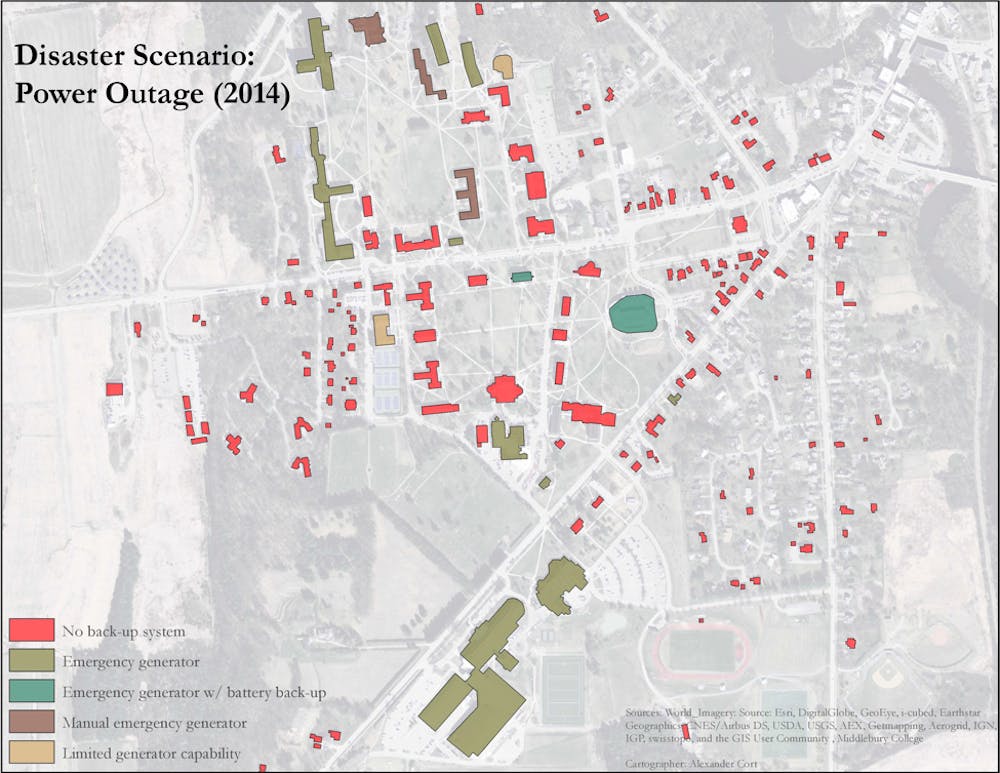Students, staff and community members gathered in the Robert A. Jones conference room on Nov. 12 to discuss the feasibility of creating a “microgrid” on Middlebury College’s campus.
A microgrid is a smaller, more localized version of a larger power grid that brings distributed energy resources (e.g. wind, solar, natural gas) closer to where energy is being used. In this case, the larger power grid in the area is operated by Green Mountain Power (GMP), which currently supplies approximately 80 percent of the College’s electrical demand.
The creation of a microgrid would allow the College’s electrical system to better withstand extreme climate events. For example, if a storm were to cause a large-scale power outage, then the College would be able to disconnect from the main grid operated by GMP and continue to operate with the electrical generation available on campus.
Panelist speakers included Michael Hightower from Sandia National Laboratories, Jito Coleman from Green Toolbox Consulting and Josh Castonguay from GMP. The three shared their experiences working with microgrids and discussed successful implementation strategies.
“Microgrids are the future of energy distribution — they’re cheaper, better for renewables, more local and more resilient,” said Isaac Baker ’14.5, who helped organize the panel with Director of Sustainability Jack Byrne. Baker will be teaching a Winter Term course analyzing the feasibility of College microgrid from a financial, regulatory and logistical standpoint.
As a part of his independent study, Baker has been speaking with microgrid experts and researching the implementation of microgrids on college campuses across the country that are similar in size to Middlebury. Baker formed the idea for a microgrid while attending the Middlebury School of the Environment during its inaugural run last summer.
Baker said, “As a part of the sustainability practicum course, we were put into groups of four and matched with Director of Sustainability Jack Byrne. Our task was to assess climate vulnerability for Middlebury College, and the vulnerability my group identified was extended power outages due to extreme weather.”
Baker stated that a microgrid will give more resiliency to infrastructure at the College, most significantly through the ability to go into “Island Mode,” where the microgrid can fully power the College if the main grid operated by GMP goes down.
Princeton University and Wesleyan University are currently among the rising number of schools that have successfully created their own microgrids. Princeton’s microgrid gained recognition two years ago when it successfully went into Island Mode and kept power running to the school through Hurricane Sandy.
“Once you have a microgrid, another benefit is that you’re you’re able to act as a point of aid for the college and the surrounding community during disaster scenarios,” Baker said.
Baker added that both schools he has been focusing his research on — Princeton and Wesleyan — have seen significant savings since” implementing a microgrid
He said, “The way it works economically is that [the microgrid] operates in parallel with the larger power grid, so at any moment we can take power from the grid or sell some of it back. This means we wouldn’t have to invest as much in storing our electricity.”
Additionally, the microgrid fits in with the College’s goal toward achieving carbon neutrality.
“Our goal is to figure out how and if we can make the College more climate resilient while achieving other essential institutional goals,” Baker said. “We probably won’t go forward with the project unless we can both decrease the amount of carbon in our electricity and also decrease the cost of that energy.”
A more detailed analysis of the economic costs and benefits of a Middlebury microgrid will be conducted in Baker’s winter term course.
Baker said, “The general outline is that we will be spending the first week examining our campus infrastructure and understanding the system we have here as best as we can. The next three weeks will go into developing a proposal for the project — how much it will cost and its feasibility from a regulatory standpoint.”
He continued, “If our findings show that a microgrid is something we should be considering, then we will be refining our ideas and start planning a presentation for the Board of Trustees.”
Baker added that the course — which has been filled — will contain a good sampling of students, from first-years to seniors. He said, “If [the microgrid project] goes through, it will inevitably be a multi-year project.”
Baker said, “What inspired me to do this project is that we have so much of the infrastructure already in place: we own our own power lines, we already produce a great deal of energy on campus, and we have access to two stable, inexpensive, and carbon-neutral sources of energy, wood chips and biomethane.”
He added, “We know we’re on track to hit carbon neutrality in 2016. Once we get there, the question will be how do we move forward and make carbon neutrality a visible reality here on campus? The College has been hailed as an environmental leader because we’ve made strong commitments in the past… building a microgrid now would put us ahead of the curve and show once again that we can walk the walk in the face of climate change.




